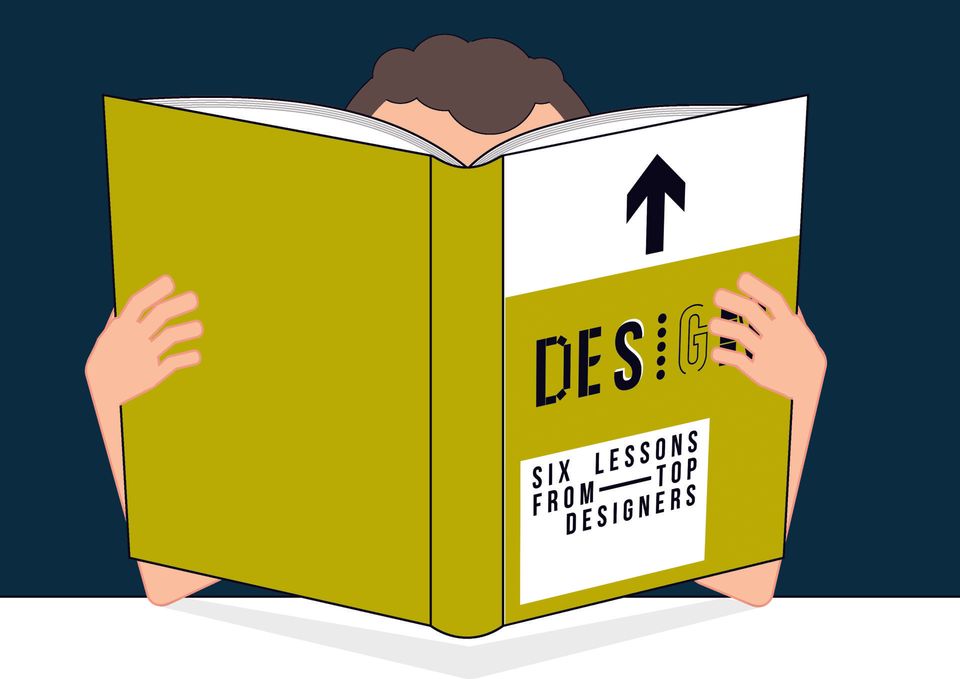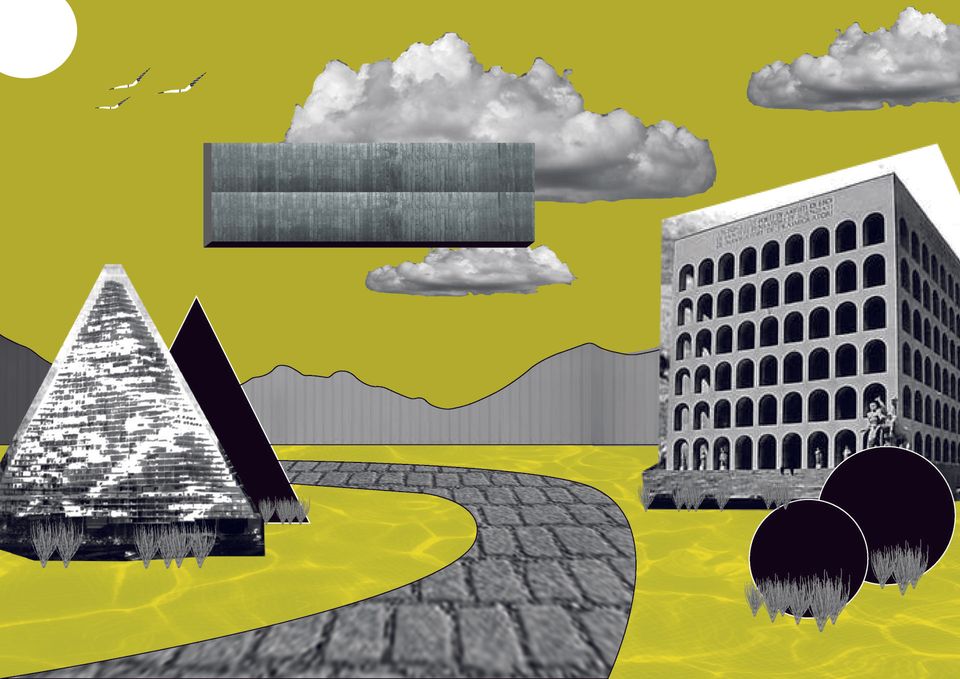Six Lessons From Top Designers
David Craig • February 19, 2020
Tips & Tricks from designers in some of the worlds established studios.

IMAGE BY BRAYDEN WARD | EMMA SLAVIN-HALL
Learning from the experience of top designers offers insights and advice for the design world and hopefully helps improve our process and learn from their mistakes. Have you ever wondered who designed your favorite advert? Who designed that inspiring building that you walk past every day? Or why your computer or phone looks and operates the way it does?
While the aesthetics and functionality of digital content, manufactured objects or our built environment may seem somewhat simple and perhaps obvious, the process is not that simple. Behind every design is a team of designers, engineers, and creatives working hard to make it all seem effortless.
Teams of designers vary in type and size, from corporate size to startups, however in most successful projects there tends to be a lead designer or visionary who ‘owns the baby’ and drives the process forward. The lead designer role is one that requires experience, both domain and design experience with the ability to assimilate the contributions of others to realize a project and importantly the ability to say “no” as much as “yes”. Check out our article on Feature-Creep to see what we mean.
Where does that experience come from? First let's start from the beginning, where fresh-faced designers set out on their careers.
Lesson 1: Creativity is a process, it’s a journey - just don’t focus on the destination.
Many young designers are taught the traditional meaning of design - often taught at degree level within a particular creative field. However, during and after studying many students work as interns in studio environments. Working upwards from intern to; junior, mid-weight, to senior designer.
“Don’t assume other people are thinking deeply about your career, your contributions, or your role on a project. It’s great to have mentors, collaborative colleagues, and an awesome boss, but even if you have those things you need to take charge of your work, your day and your career” (Dan Viens, Creative Director @ Wieden + Kennedy).
Lesson 2: Feedback and collaboration are key to success, always be learning - but don’t try to make it
on your own.
Highlight, learn and find collaboration within your project. This is a lesson all designers discover from a working environment, either within a studio or freelance. Collaboration requires the connection and action of working with someone/a group to complete a task, project or job. By using research and applying it elsewhere, designers outline the appropriate collaborators to work, taking into consideration the working brief. There is no intention of leaning towards a particular field or designer, without research, as both parties can learn from one another. Merging thinking and workflow, collaboration across disciplines can explore unknown territories. Nobody in design can pilot and judge their work successfully, for this reason, designers often participate in critiques about their work. Critiques offer valuable insights and interact with other designers delivering feedback.
“…either you get off the high horse or you are thrown off the horse” (Jerry Lorenzo, Founder @ Fear of God). Acknowledge the acceptance of change, permitted by specialists, feedback provides information that simply can't be seen from one’s view.
Collaboration for sure encompasses the idea of the unknown. How will you know it will work? Who to collaborate with? When to contribute to the workload? These are some questions designers ask before collaborating with someone. There is no control where your creativity will take you, but partnerships should agree to (some) terms and conditions before any work takes place. Make it clear what you expect or what you can contribute.
Lesson 3: Making a process that fits you, this takes time.
Read our previous post on The Creative Process, this explains why developing a process matters in design. There is an underlying process at all levels in design and all of these adhere to a process that adapts to them. Within a studio, there are many jobs, roles, and opportunities happening at any one stage. Staying on top of all these tasks and deadlines, whilst developing a process, will give you the framework to better understand your strengths and weaknesses.
Design can at times be broad, narrow and wild. “Designers are not limited to problems but find and formulate problems within the broader context of the brief” (Nigel Cross, Design researcher, and educator).
Lesson 4: Seek inspiration from unexpected places.
Designers are go-getters; thinkers, educators, inventors, creators - the possibilities are endless. Anything can be possible with the right intentions. Explore innovative solutions, experiment with wild ideas and infiltrate knowledge across disciplines. If an idea involves fashion and you’re educated as an architect, take the dive and see what happens. Make it possible, see what can happen. See lesson 2 (above), feedback and collaboration are key to success.
For example, collaborate with a fashion designer on your idea, seek and find an expert/specialist, become familiar with the tools, cycle, and nature of a fashion designers process (start to finish). A place of unfamiliar territory, the unknown. This can infuse and push ideas on a scale intensively, seek inspiration and develop your skills.
IMAGE BY BRAYDEN WARD | EMMA SLAVIN-HALL
Lesson 5: Master your tasks as a multidisciplinary.
Multiple jobs, ideas or project life cycles, being a master of your tasks can improve the effectiveness of your time management. From the designer, infiltrator to collaborator, work can dawn on us. Keeping track of your tasks can find space and time for your intriguing ideas. Being a ‘multidisciplinarian’ isn’t just having the ability to keep on top of jobs and tasks, it’s also translating judgment into a physical and psychical sense of experimentation. Making room for what could happen.
Research suggests that practitioners follow set rules from models in their assessments; whereas established designers find room and time to infiltrate ideas across disciplines within their own process (lesson 3). Emerging that designer is bigger than the latter elements of the very process. Design to your intentions and become multidisciplinary (research).
It’s common practice that design projects start with a brief. This brief outlines problems within areas of interest, clients’ requirements, budget, and timeframe. For any designer, it is hard to step away from thinking of solutions, at first. Research initially becomes the first job of any designer, understanding issues that the client may be facing. This research is key and can create excitement for the possibilities ahead, while fully investing and justify problems that are presented to you. Although it’s best to practice to step away from the assumptions and interpretations letting research guide you.
Lesson 6: Love the problem not the solution.
From client-to-brief and brief-to-designer, all parties look for something to develop upon. Designers understand this repetitive cycle of the working brief, the pinnacle starting point. Designers start from scratch in terms of thinking for each brief. Although creative behaviour learns to love the problem and find applicable solutions later, it applies applicable thoughts for the client’s intentions. Take the necessary risks to further your learning.
Written BRAYDEN WARD
Illustrated by BRAYDEN WARD | EMMA SLAVIN-HALL
Edited EMMA SLAVIN-HALL | DAVID CRAIG
Articles

In the period since COVID forced many of us back home and out of the office, remote work has become the new norm for many. The flexibility of working from home, especially for those with small children, is very compelling, but making a productive workspace is more than setting up a desk in the spare room. More people are seeking to create functional and comfortable workspaces in their homes, however, it can be difficult to strike the right balance between a professional office space and a cosy home environment. Here are some tips for designing a home workspace that meets both of these needs: Dedicate a specific area for work Designating a specific area for work is essential for separating work from leisure time. This could be a separate room or just a corner of a room. It is important to make sure that the workspace is free from distractions and clutter, as this will help you stay focused and productive. Choose the right furniture Ergonomic furniture is key to a comfortable and productive workspace. Invest in a comfortable chair, a desk that is the right height, and a good-quality mouse and keyboard. If you are prone to back pain, consider a standing desk. Add personal touches Just because your workspace should be functional, doesn’t mean it can’t be personal. Add photos, plants, and other personal items to make the space feel like your own. This will help create a sense of comfort and make you feel at home in your workspace. Good lighting Good lighting is essential for a comfortable workspace. If possible, place your desk near a window for natural light. If not, invest in a high-quality desk lamp to provide bright, even light. Keep it organised An organised workspace will help you stay productive and focused. Use desk organisers, filing cabinets, and other tools to keep your work area free from clutter. A clean and organised workspace will also help you start each day with a clear mind. Consider your work style Think about the type of work you do and how you like to work. If you prefer a minimalist workspace, opt for a simple desk and a few basic supplies. If you need space for multiple screens and other technology, make sure you have enough room to work comfortably. Take breaks It’s important to take breaks throughout the day to avoid burnout. Step away from your desk, go for a walk, or do some stretching exercises to clear your mind and recharge.










